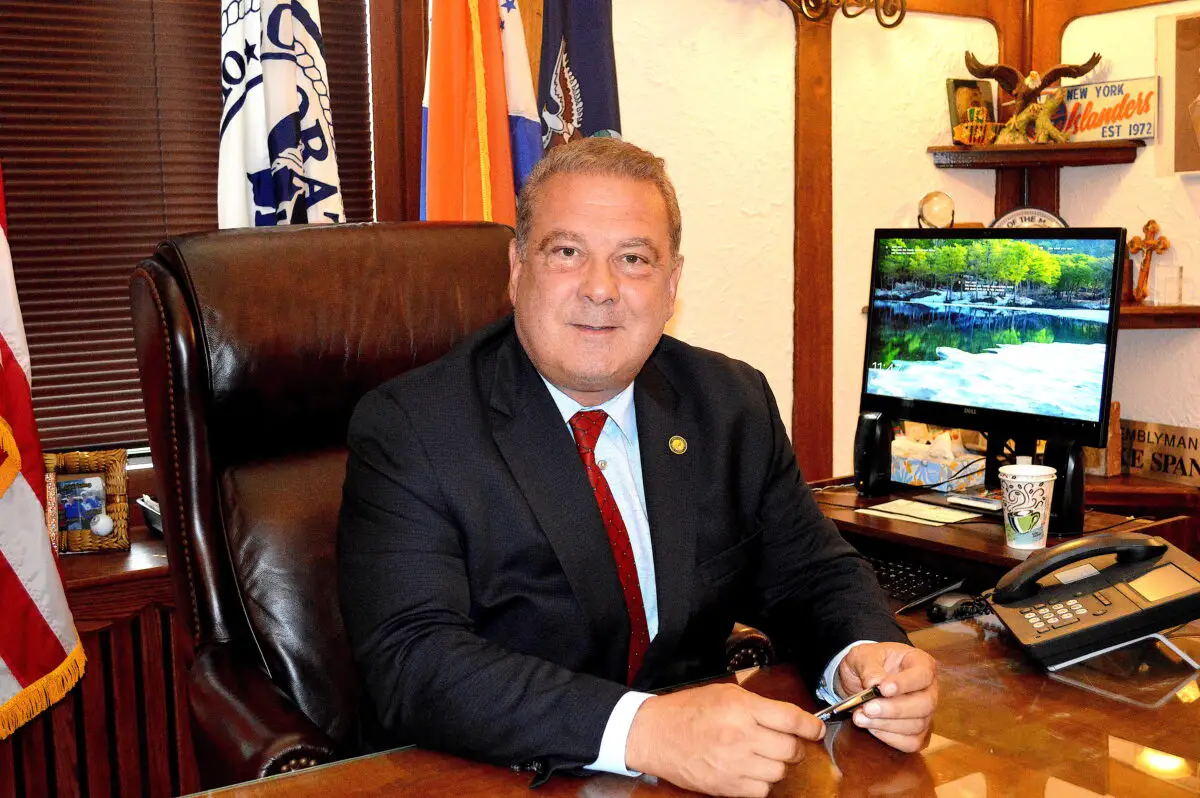
When the Fukushima reactors blew up, Buchanan Mayor Sean Murray fielded 15 media requests for interviews: an outlet from Long Island one moment, Reuters and NBC the next.
The phone tally from within his village by March 18 was zero.
“I had one person come up to me during our St. Patrick”™s Day parade to ask about the differences between the types of reactors,” he said, recounting a parade-route exchange on pressurized-water reactors in his village and the boiling-water variety in Japan.
“That”™s about it.”
The parade itself afforded a second anecdote on the plant amid international nuclear jitters. About 300-400 people attended, the mayor said: “Families, schools, the fire department; more than we had last year.”
The New York Affordable Reliable Electricity Alliance at the same time reminded residents there is no historic record of a tsunami hitting Buchanan ”“ plus 30 years of geologic studies ”“ to buttress its point the plant is safe.
Murray said the residents of Buchanan are, as a whole, better versed on nuclear issues because of their proximity to the plant. “The residents are knowledgeable. Whether it”™s regulations or wedge-wire screens, they want to get in front of the issues,” he said.
“A big problem right now is communication,” Murray said. “If you make it too simplistic it scares people. If you make it to technical you lose them in the details. The population in Buchanan is not as afraid as some are because they are more educated on the issue.
“As for that communication, let it start with me and go all the way to the president. We are a lot more forthcoming than they have been in Japan. Japan”™s openness is like we experienced with Three Mile Island” ”“ the 1979 Pennsylvania reactor failure ”“ “that”™s how far behind they are in getting out useful information.”
Murray is a Buchanan native who was first elected to the village mayor”™s chair in 2010. He is also a senior nuclear mechanic at Indian Point, where the 44-year-old married father of two small children began working after his discharge from the U.S. Navy. (His ship was a diesel-powered support ship to nuclear subs and he clarifies he was not a submariner.)
“I believe I am objective concerning the plant,” he said, identifying his position as “union, not management ”“ with no vested interest in promoting nuclear energy. I believe my technical background makes me more understanding of people”™s concerns and more willing to listen.”
The plant”™s two operating reactors are up for relicensing in 2013 and 2015 with the Nuclear Regulatory Commission. “If the plant was to close, it would mean an immediate large tax increase for the village.” He said Indian Point last year contributed $1.9 million to village coffers (school budgets are separate): “That”™s about 30 (percent) to 32 percent of the total.”
Murray is skeptical that Indian Point could readily convert to natural gas, as some have suggested.
In 2003-2004, “Indian Point wanted to add 600 megawatts in natural gas capacity, but they found the volume of natural gas was not available,” Murray said. Other options also come with asterisks: “Nobody wants to build a coal-fired power plant, at least not in New York,” Murray said. “And it would take 2,000 wind turbines to replace Indian Point. There”™s not enough solar power available reliably here. Even natural gas ”“ you have to get the gas somehow; fossil fuels have their own negative sides. If you close Indian Point, you have to get the energy back somehow.”
He said besides tax revenues, there would be immediate impacts should Indian Point close regarding: local business activity, employment and pollution. (The company”™s ads boast no greenhouse gasses and an environmental philosophy “as green as the grass on the Yankee infield.”)
John Durso Jr., executive director for the New York Affordable Reliable Electricity Alliance, said in a written statement: “For more than 30 years, independent experts have studied seismic related issues about Indian Point and continually found the facility to be safe. In 2008 a panel of highly renowned, independent experts evaluated 64 safety issues at Indian Point, including seismic design, and also determined the plant is very safe.”
The New York City-based alliance was founded in August 2003 in response to the massive East Coast-Canada blackout.
“There are also fundamental differences between Indian Point and the Fukushima plants. Indian Point is on a river, 24 miles from the coast, while Fukushima is on an ocean. Tsunamis are known to occur in Japan; there is no record of them in New York state, especially so well inland.
“Important lessons will be learned from Fukushima and there will be even higher safety standards and practices at U.S. nuclear plants,” Durso continued. “We urge all policy makers as well as the nuclear power industry to pay attention to these findings so that nuclear power in New York and the United States will continue to provide clean, reliable and safe energy in the future.”


















